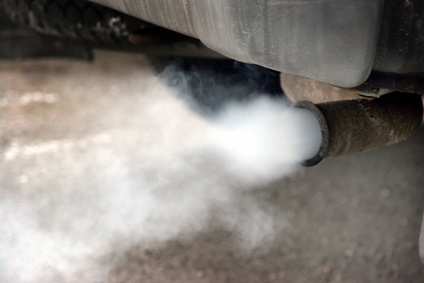
Testing diesel smoke is widely considered the only reliable source for measuring the level of emissions from a diesel engine. In certain states such as California and in many countries of the European Union, diesel smoke tests are required annually of all vehicles powered by diesel fuel. If you do not live in a location that requires such testing, you can perform such testing on your own, but it will involve a significant investment of about $2,000 to $5,000, as of 2010, for a calibrated diesel smoke meter.
Review maintenance records and make sure the vehicle you are testing has received proper, scheduled maintenance and the engine does not have any major problems. If you cannot verify from maintenance records that the vehicle has received proper maintenance, you should not proceed with the diesel smoke test as the test may potentially cause damage to the engine.
Check the exhaust system to make sure there is no damage. Use a flashlight and get under the vehicle to inspect the exhaust pipes for significant rusting and holes in the system. If the exhaust has significant damaged, the test will not produce accurate results. Do not proceed. Make sure the vehicle has no accessories preventing you from putting the probe of the diesel smoke meter into the tail of the exhaust pipe.
Accelerate the engine of the vehicle from idle to governor speed and let off the gas. Do not hold the vehicle for any length of time at the governor speed. Simply rev the engine until you hear it reach governor speed (when the engine starts to race) and let off the gas.
Put the probe of the diesel smoke meter into the opening of the vehicle's tailpipe to perform the test. If you are unsure how to read your diesel smoke meter or are unsure how it works, you must refer to your user's manual as the products vary considerably.
Repeat Steps 3 and 4 up to a maximum of six times and take an average of all six readings to confirm your level of emissions for the diesel engine.